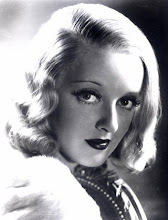The basic plot, such as it is, sounds like a conventional mystery: A photographer discovers something odd in one of his pictures, and repeatedly blows up the negative until he uncovers a corpse in the photo and realizes that he has witnessed a murder. However, auteur Michaelangelo Antonioni -- who inspired the phenomenon known as "Antoniennui" for his supposed ability to bore audiences to death -- turns this concept into an open-ended question about the nature of reality.

The film follows Thomas, a photographer who works with models, a group he clearly disdains, in order to fund his more artistic pursuits. He is involved with one woman, although in what capacity remains deliberately unclear ("She isn't my wife, really, we just have some kids... no, no kids, not even kids."), but flirts with and seduces others, including the woman he later comes to believe attempted to have her husband killed. The narrative, until he discovers the body in the photo, seems to drift a bit aimlessly; this is perhaps what the term "Antoniennui" is referring to, although I thought the beautifully-shot film was anything but boring, including several sequences that didn't seem to go anywhere. This apparent lack of direction is very purposefully in keeping with modernist themes; not every loose end needs to be tied, or rather, most don't.
Of course, I can't end this post without talking about the mimes that bookend the film. In the opening sequence they are a loud and active contrast to the quiet, passive world the film presents us with; at the end, their game of tennis, and particularly the sound of tennis as Thomas throws the imaginary ball, suggests that truth is subjective; if you believe in something, then it's true even if it isn't necessarily factual. This could be seen as a representation of the hallucinogenics that were popular among the counter-culture at that time, stating that what you see is your reality.


Digging this film up on VHS ages ago, at Ebert's urging, is what made me get into films of this sort, and it's always been one of my favorites. No one captures human emptiness like Antonioni.
ReplyDeleteThis is one of my absolute favorites, I love the way you described the mimes!
ReplyDeleteSounds great. Love how you showed social reflections within the film.
ReplyDelete